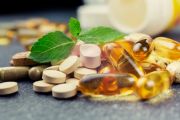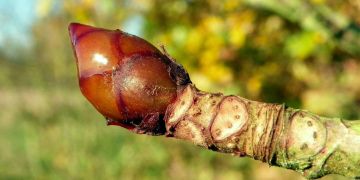The plant is taken in small doses internally for the treatment of a wide range of venous diseases, including hardening of the arteries, varicose veins, phlebitis, leg ulcers, hemorrhoids and frostbite.
Health benefits
Anti-inflammatory
Horse chestnut is an astringent, anti-inflammatory herb that helps to tone the vein walls which, when slack or distended, may become varicose, hemorrhoidal or otherwise problematic. The plant also reduces fluid retention by increasing the permeability of the capillaries and allowing the re-absorption of excess fluid back into the circulatory system.
Treats chest pain
The seeds are decongestant, expectorant and tonic. They have been used in the treatment of rheumatism, neuralgia and hemorrhoids. A compound of the powdered roots is analgesic and has been used to treat chest pains. Extracts of the seeds are the source of a saponin known as aescin, which has been shown to promote normal tone in the walls of the veins, thereby improving circulation through the veins and promoting the return of blood to the heart.
Strengthens veins
Veins that are either weak and/or under chronic stress are more likely to fail and therefore more likely to allow leakage of fluid from the vessels into the tissue space leading to swelling. Fluid accumulation is more common in the legs and far more likely in individuals who stand for extended periods of time. Prolonged standing and obesity can increase pressure within leg veins causing weak veins to swell, leak and deteriorate into varicose veins. Aescin, performs an antioxidant function and has a general vasoprotective role by protecting collagen and elastin (the two chief proteins that form the structure of veins). By protecting these key vessel proteins, veins and capillaries stay strong and maintain their structural integrity when exposed to stress.
A study out of West Germany, reported in the early 1980s, showed one commercial horse chestnut product affected both the collagen content and architecture of the varicose vein and helped make the veins more normal.
Additional uses
Horse chestnut has also been taken internally for leg ulcers and frostbite, and applied externally as a lotion, ointment, or gel. In France, an oil extracted from the seeds has been used externally for rheumatism. The topical preparation has also been used to treat phlebitis. Most studies have looked at the plant's use internally. But there is some evidence that applying an ointment to the affected area may also help.
Research
Randomised double-blind, placebo-controlled studies have shown that horse chestnut can reduce oedema (swelling with fluid) following trauma, particularly those following sports injuries, surgery, and head injury. A clinical study compared horse chestnut extract to compression stockings and placebo for varicose veins. Both the herbal medicine and the stockings significantly reduced oedema of the lower legs compared to placebo. Feelings of tiredness and heaviness, pain, and swelling in the legs were alleviated by the extract, in comparison to placebo. In addition, common symptoms which accompany lower leg swelling; such as leg pain, heaviness and fatigue, are typically reduced in individuals taking horse chestnut seed extract.
Ingredients
Horse chestnut contains several triterpene glycosides, with aescin predominating in the seeds. Coumarin glycosides aesculin, fraxin, and scopolin and their corresponding aglycones, aesculetin, fraxetin, and scopoletin, are also found, along with flavonoids such as quercetrin. Allantoin, leucocyanidin, tannins, and the plant sterols sitosterol, stigmasterol, and campesterol have also been identified. The whole extract made from the horse chestnut is probably superior to the isolated aescin. This is a commonly overlooked mechanism of most herbs. The combination of the entire plant components synergistically can often produce superior results as compared to a refined, isolated active ingredient of the herb.
Trial studies suggest that horse chestnut may also be of value in treating lung conditions of infarction, embolisms and thrombosis.





